Measurement-Based Distribution Grid Harmonic Impedance Models and Their Uncertainties
Abstract
1. Introduction
2. Impedance Estimation
3. Proposed Uncertainty Estimation Methods
3.1. Voltage Distortion Comparison
3.2. Current Injection Comparison
4. Distribution Grid Model
4.1. Aggregated Linear Model
4.2. Sub-Grid with Additional Non-Linear Components
5. Results
5.1. Uncertainty Calculation Using VDC Method
5.2. Uncertainty Calculation Using CIC Method
6. Discussion
7. Conclusions
Author Contributions
Funding
Conflicts of Interest
References
- D’Antona, G.; Muscas, C.; Sulis, S. State Estimation for the Localization of Harmonic Sources in Electric Distribution Systems. IEEE Trans. Instrum. Meas. 2009, 58, 1462–1470. [Google Scholar] [CrossRef]
- Barakou, F.; Bollen, M.H.J.; Mousavi-Gargari, S.; Lennerhag, O.; Wouters, P.A.A.F.; Steennis, E.F. Impact of Load Modeling on the Harmonic Impedance Seen from the Transmission Network. In Proceedings of the 2016 17th International Conference on Harmonics and Quality of Power (ICHQP), Belo Horizonte, Brazil, 16–19 October 2016; pp. 283–288. [Google Scholar]
- Enslin, J.H.R.; Heskes, P.J.M. Harmonic Interaction between a Large Number of Distributed Power Inverters and the Distribution Network. IEEE Trans. Power Electron. 2004, 4, 1586–1593. [Google Scholar] [CrossRef]
- Cuk, V.; Cobben, J.F.G.; Kling, W.L.; Ribeiro, P.F. Considerations on Harmonic Impedance Estimation in Low Voltage Networks. In Proceedings of the 2012 IEEE 15th International Conference on Harmonics and Quality of Power, Hong Kong, China, 17–20 June 2012; pp. 358–363. [Google Scholar]
- Meyer, J.; Stiegler, R.; Schegner, P.; Röder, I.; Belger, A. Harmonic Resonances in Residential Low-Voltage Networks Caused by Consumer Electronics. CIRED Open Access Proc. J. 2017, 672–676. [Google Scholar] [CrossRef]
- Xu, W.; Ahmed, E.E.; Zhang, X.; Liu, X. Measurement of Network Harmonic Impedances: Practical Implementation Issues and Their Solutions. IEEE Trans. Power Deliv. 2002, 17, 210–216. [Google Scholar]
- Girgis, A.A.; McManis, R.B. Frequency Domain Techniques for Modeling Distribution or Transmission Networks Using Capacitor Switching Induced Transients. IEEE Trans. Power Deliv. 1989, 4, 1882–1890. [Google Scholar] [CrossRef]
- Borkowski, D.; Wetula, A.; Bień, A. New Method for Noninvasive Measurement of Utility Harmonic Impedance. In Proceedings of the 2012 IEEE Power and Energy Society General Meeting, San Diego, CA, USA, 22–26 July 2012; pp. 1–8. [Google Scholar]
- Nagpal, M.; Xu, W.; Sawada, J. Harmonic Impedance Measurement Using Three-Phase Transients. IEEE Trans. Power Deliv. 1998, 13, 272–277. [Google Scholar] [CrossRef]
- Serfontein, D.; Rens, J.; Botha, G.; Desmet, J. Continuous Event-Based Harmonic Impedance Assessment Using Online Measurements. IEEE Trans. Instrum. Meas. 2016, 65, 2214–2220. [Google Scholar] [CrossRef]
- Monteiro, H.L.; Duque, C.A.; Silva, L.R.; Meyer, J.; Stiegler, R.; Testa, A.; Ribeiro, P.F. Harmonic Impedance Measurement Based on Short Time Current Injections. Electr. Power Syst. Res. 2017, 148, 108–116. [Google Scholar] [CrossRef]
- Riccobono, A.; Liegmann, E.; Pau, M.; Ponci, F.; Monti, A. Online Parametric Identification of Power Impedances to Improve Stability and Accuracy of Power Hardware-In-The-Loop Simulations. IEEE Trans. Instrum. Meas. 2017, 66, 2247–2257. [Google Scholar] [CrossRef]
- Robert, A.; Deflandre, T.; Gunther, E.; Bergeron, R.; Emanuel, A.; Ferrante, A.; Finlay, G.S.; Gretsch, R.; Guarini, A.; Iglesias, J.L.G.; et al. Guide for Assessing the Network Harmonic Impedance. In Proceedings of the 14th International Conference and Exhibition on Electricity Distribution. Part 1. Contributions (IEE Conf. Publ. No. 438), Birmingham, UK, 2–5 June 1997; Volume 2, p. 3-1. [Google Scholar]
- Busatto, T.; Larsson, A.; Rönnberg, S.K.; Bollen, M.H.J. Including Uncertainties From Customer Connections in Calculating Low-Voltage Harmonic Impedance. IEEE Trans. Power Deliv. 2019, 34, 606–615. [Google Scholar] [CrossRef]
- Busatto, T.; Ravindran, V.; Larsson, A.; Rönnberg, S.K.; Bollen, M.H.; Meyer, J. Deviations between the Commonly-Used Model and Measurements of Harmonic Distortion in Low-Voltage Installations. Electr. Power Syst. Res. 2020, 180, 1–6. [Google Scholar] [CrossRef]
- International Electrotechnical Commission (IEC). Testing and Measurement Techniques—General Guide on Harmonics and Interharmonics Measurements and Instrumentation, for Power Supply Systems and Equipment Connected Thereto; Technical Report No. IEC 61000-4-7; International Electrotechnical Commission (IEC): Geneva, Switzerland, 2009. [Google Scholar]
- Xu, W.; Liu, Y. A Method for Determining Customer and Utility Harmonic Contributions at the Point of Common Coupling. IEEE Trans. Power Deliv. 2000, 15, 804–811. [Google Scholar]
- International Electrotechnical Commission (IEC). Electromagnetic Compatibility (EMC)—Part 3-6: Limits—Assessment of Emission Limits for the Connection of Distorting Installations to MV, HV and EHV Power Systems; Technical Report No. IEC TR 61000-3-6; International Electrotechnical Commission (IEC): Geneva, Switzerland, 2008. [Google Scholar]
- Špelko, A.; Blažič, B.; Papič, I.; Pourarab, M.; Meyer, J.; Xu, X.; Djokic, S.Z. CIGRE/CIRED JWG C4.42: Overview of Common Methods for Assessment of Harmonic Contribution from Customer Installation. In Proceedings of the 2017 IEEE Manchester PowerTech, Manchester, UK, 18–22 June 2017; pp. 1–6. [Google Scholar]
- Papič, I.; Matvoz, D.; Špelko, A.; Xu, W.; Wang, Y.; Mueller, D.; Miller, C.; Ribeiro, P.F.; Langella, R.; Testa, A. A Benchmark Test System to Evaluate Methods of Harmonic Contribution Determination. IEEE Trans. Power Deliv. 2019, 34, 23–31. [Google Scholar] [CrossRef]
- Evaluation of Measurement Data—Supplement 2 to the “Guide to the Expression of Uncertainty in Measurement. Available online: https://www.bipm.org/utils/common/documents/jcgm/JCGM_102_2011_E.pdf (accessed on 25 April 2017).
- Hall, B.D. On the Propagation of Uncertainty in Complex-Valued Quantities. Metrol. 2004, 41, 173–177. [Google Scholar] [CrossRef]
- Ribeiro, P.F. Guidelines on Distribution System and Load Representation for Harmonic Studies. In Proceedings of the ICHPS V International Conference on Harmonics in Power Systems, Atlanta, GA, USA, 22–25 September 1992; pp. 272–280. [Google Scholar] [CrossRef]
- Burch, R.; Chang, G.; Hatziadoniu, C.; Grady, M.; Liu, Y.; Marz, M.; Ortmeyer, T.; Ranade, S.; Ribeiro, P.; Xu, W. Impact of Aggregate Linear Load Modeling on Harmonic Analysis: A Comparison of Common Practice and Analytical Models. IEEE Trans. Power Deliv. 2003, 18, 625–630. [Google Scholar] [CrossRef]
- Ye, G.; Sans, A.; Cuk, V.; van Waes, J.; Cobben, S. Impact of Distribution Network Modelling on Harmonic Impedance in the HV Grid. In Proceedings of the CIRED 2019 Conference, Madrid, Spain, 3–6 June 2019. [Google Scholar]
- Bhattacharyya, S.; Wang, Z.; Cobben, J.F.G.; Myrzik, J.M.A.; Kling, W.L. Analysis of Power Quality Performance of the Dutch Medium and Low Voltage Grids. In Proceedings of the 2008 13th International Conference on Harmonics and Quality of Power, Wollongong, NSW, Australia, 28 September–1 October 2008; pp. 1–6. [Google Scholar]
- Gole, A.; Irwin, G.; Nayak, O.; Woodford, D. EMTDC User’s Guide; Fifth Printing; Manitoba Hydro International, Ltd.: Winnipeg, MB, Canada, 2010. [Google Scholar]
- Serfontein, D.; Rens, J.; Botha, G.; Desmet, J. Improved Event Based Method for Harmonic Impedance Assessment. In Proceedings of the 2016 IEEE International Workshop on Applied Measurements for Power Systems (AMPS), Aachen, Germany, 28–30 September 2016; pp. 1–6. [Google Scholar]
- Peng, J.; Li, H.; Wang, Z.; Ghassemi, F.; Jarman, P. Influence of Sympathetic Inrush on Voltage Dips Caused by Transformer Energisation. IET Gener. Transm. Distrib. 2013, 7, 1173–1184. [Google Scholar] [CrossRef]
- Welch, P. The Use of Fast Fourier Transform for the Estimation of Power Spectra: A Method Based on Time Averaging over Short, Modified Periodograms. IEEE Trans. Audio Electroacoust. 1967, 15, 70–73. [Google Scholar] [CrossRef]
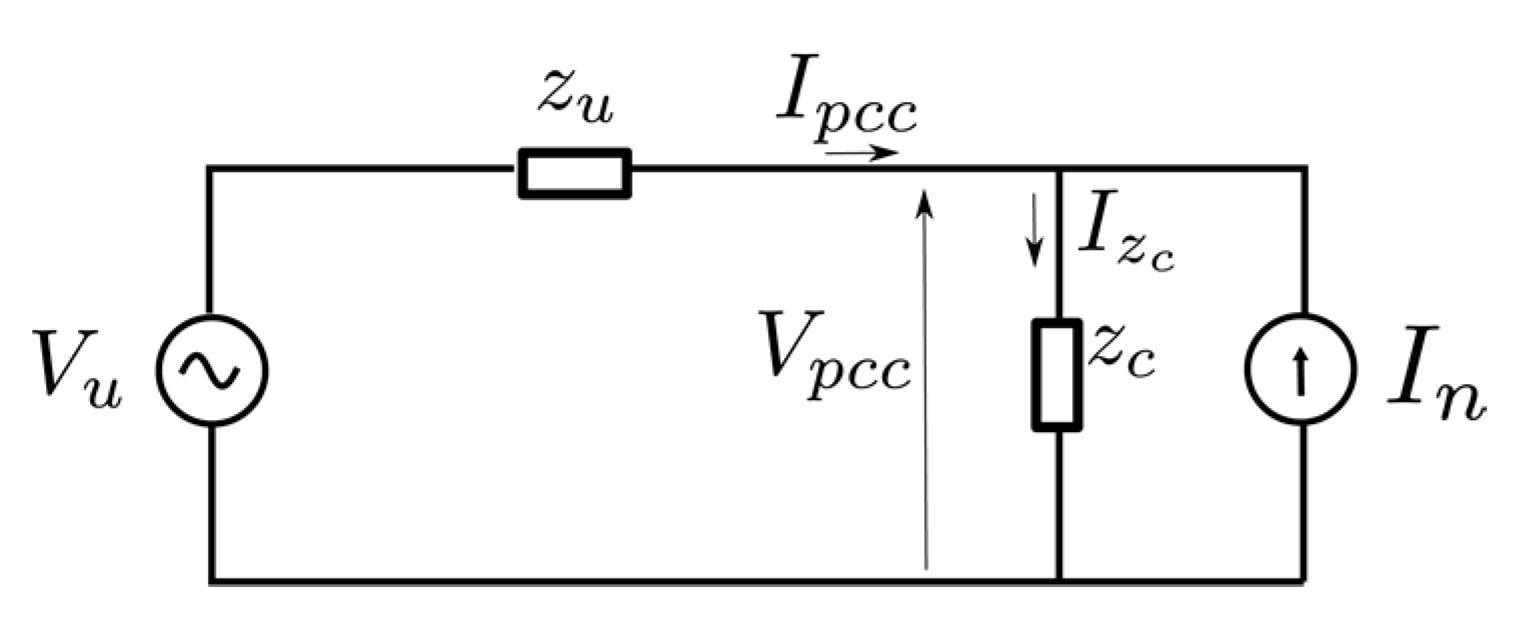

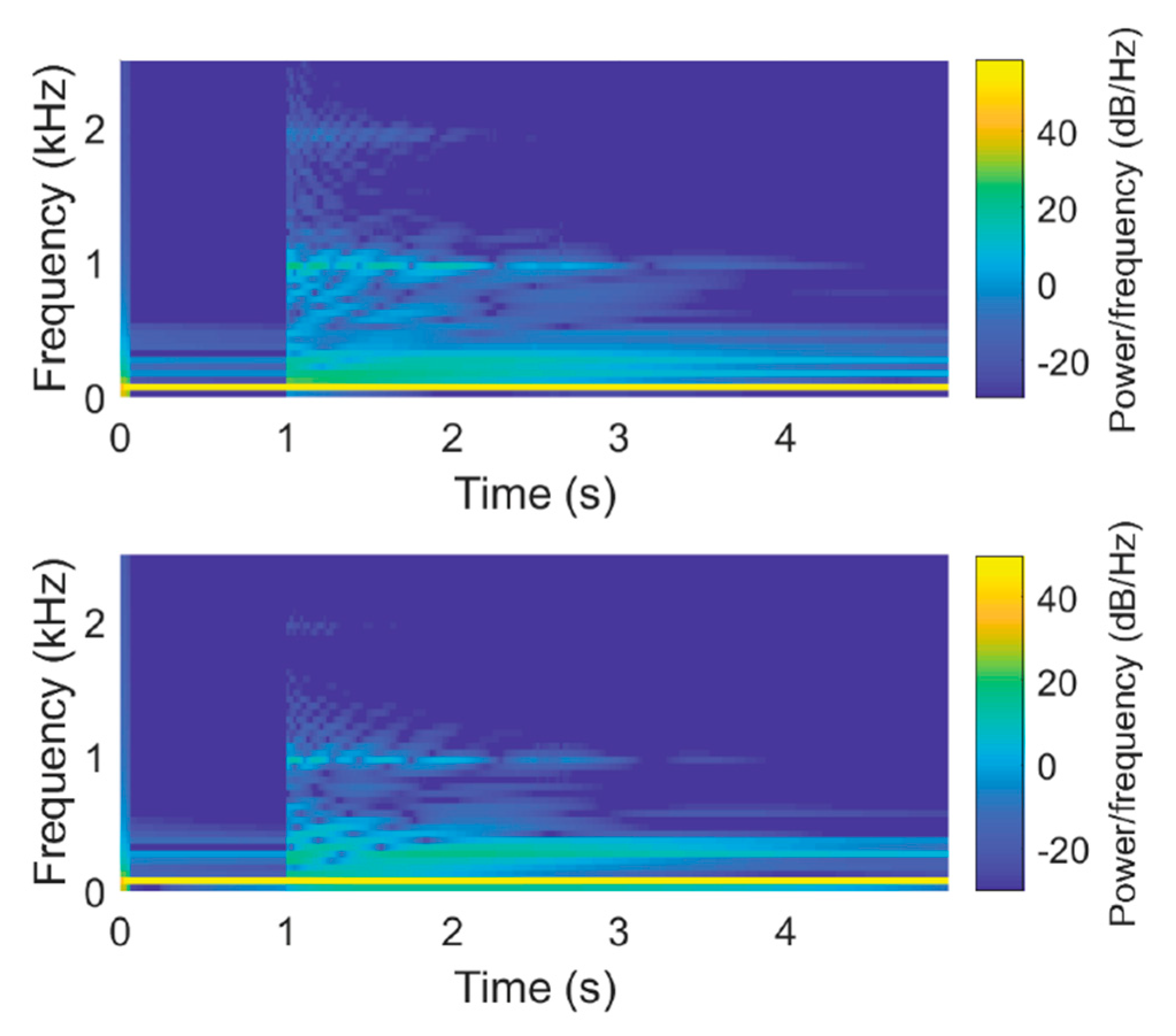
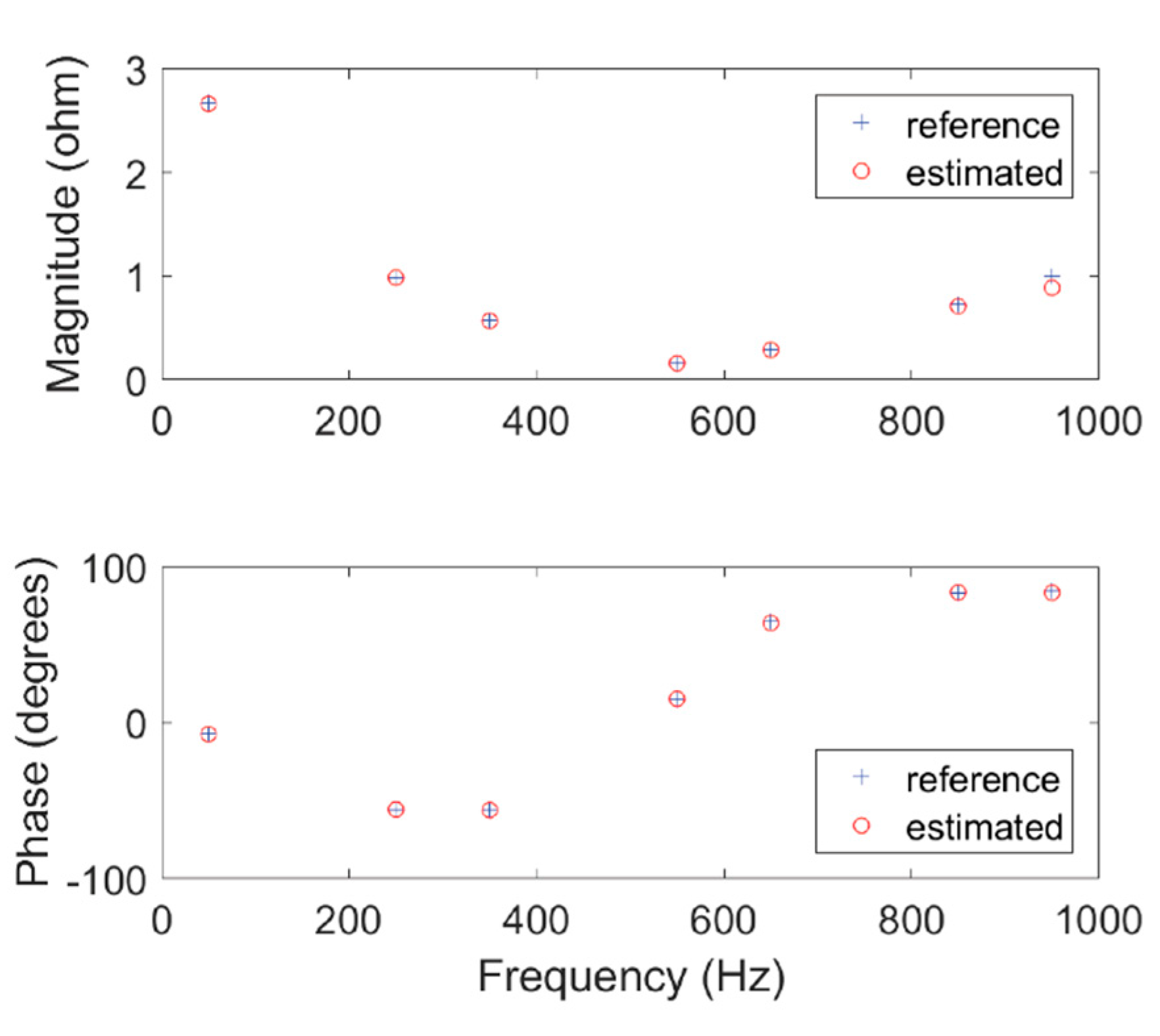

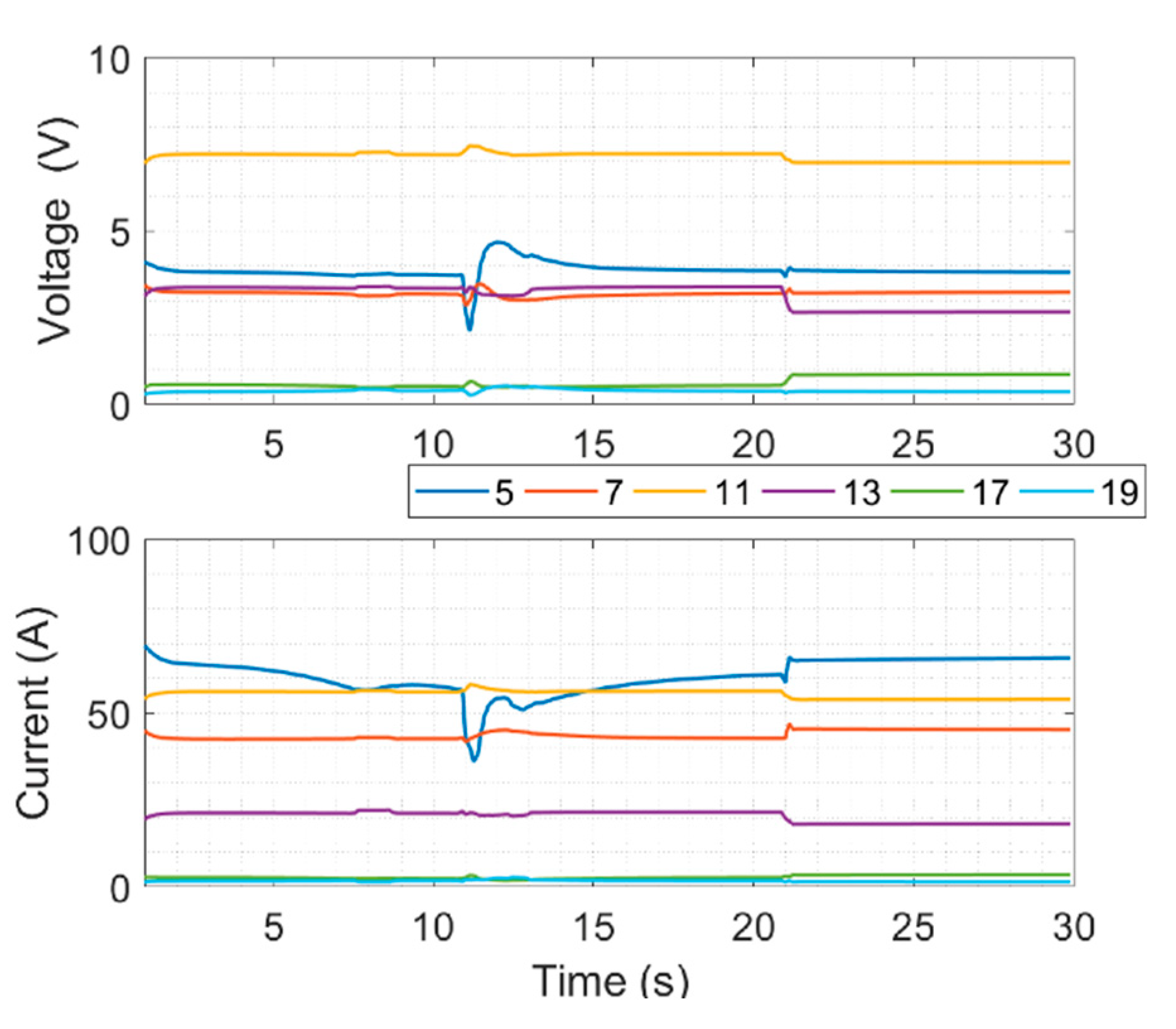
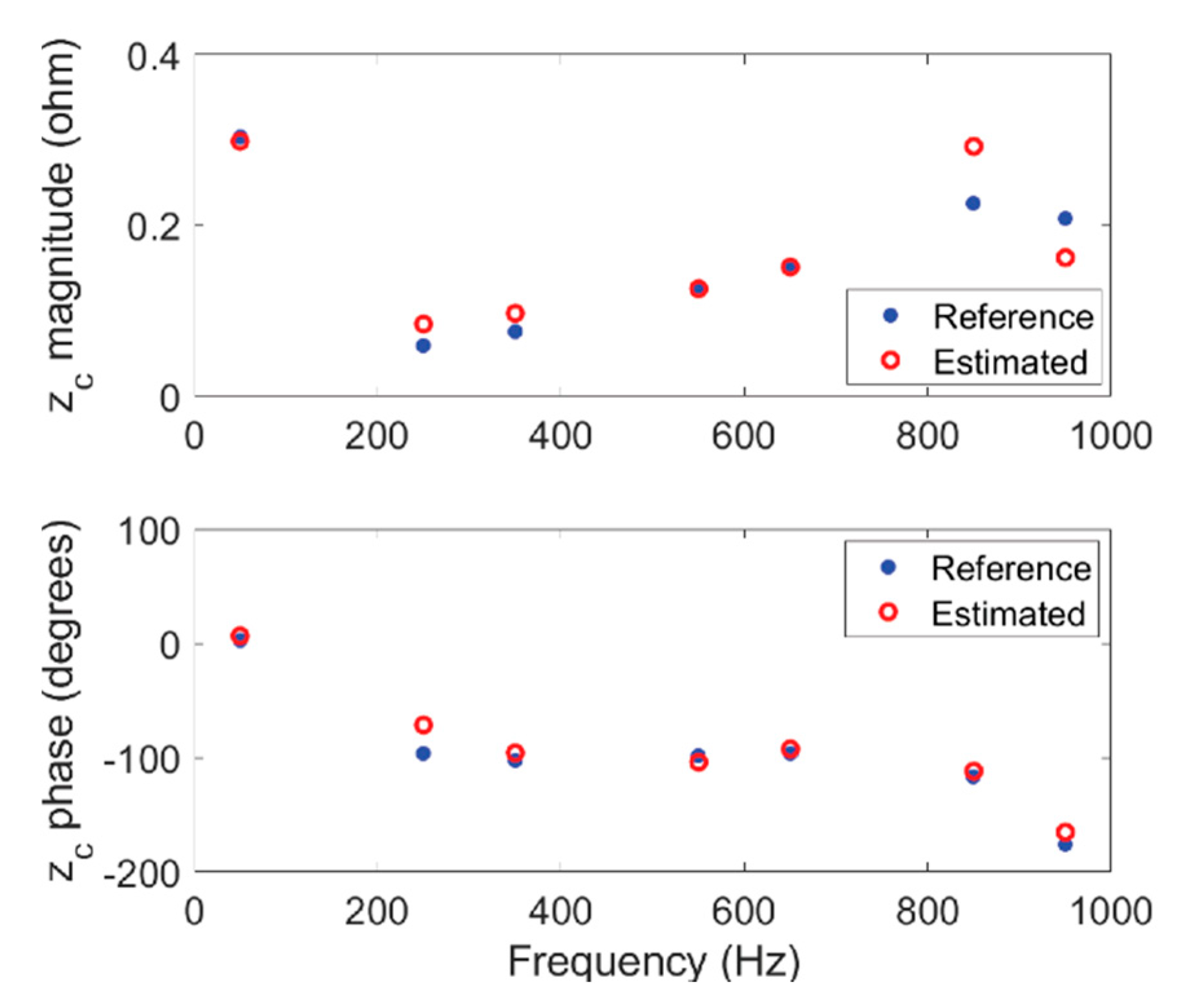


| Count | Knee Point | ||||||
|---|---|---|---|---|---|---|---|
| HV-MV | 2 | 66 MVA | 0.1 p.u. | 0.01 p.u. | 0.002 p.u. | 2 p.u. | 1.2 p.u. |
| MV-LV | 200 | 4 MVA | 0.04 p.u. | 0 p.u. | 0.002 p.u. | 2 p.u. | 1.2 p.u. |
| MV Cables | 150 kms | 44.4 μF |
| LV Cables | 500 kms | 630 μF |
| Effective Load Resistance | 0.00434 ohms | |
| Effective Motor Inductance | 0.0511 mH | |
| Household appliance capacitance | 0.15 μF | |
| PV Inverter capacitance | 0.275 μF | |
| Harmonic | ||
|---|---|---|
| 5 | 0.0269 − 0.0803i | 33.09 |
| 7 | −0.0101 − 0.0967i | 14.80 |
| 11 | −0.0306 − 0.1220i | 6.85 |
| 13 | −0.0065 − 0.1513i | 1.92 |
| 17 | −0.1089 − 0.2717i | 0.81 |
| 19 | −0.1570 − 0.0410i | 1.13 |
| Harmonic | Contribution IEC (V) | Contribution VHV (V) |
|---|---|---|
| 5 | 3.8765 − 1.2302i | 3.8058 − 0.5205i |
| 7 | −3.9710 + 0.6932i | −4.9001 − 2.3164i |
| 11 | 6.4149 + 5.6788i | 3.6973 + 1.7194i |
| 13 | 3.4454 + 0.8377i | −3.4196 + 3.5890i |
| 17 | −0.2733 + 0.6439i | −0.3266 + 0.0622i |
| 19 | −0.1369 + 0.4625i | 0.1668 − 0.0366i |
| Harmonic | ||
|---|---|---|
| 5 | 17.1979 − 28.2764i | 18.0453 − 29.4461i |
| 7 | −5.4984 + 13.7428i | −5.2910 + 13.3593i |
| 11 | −4.9142 − 4.7850i | −4.8989 − 4.7976i |
| 13 | 1.5134 + 1.1922i | 1.5374 + 1.2237i |
| 17 | 0.4999 + 0.6333i | 0.4982 + 0.6556i |
| 19 | −1.0903 − 0.3191i | −1.0584 − 0.2822i |
© 2020 by the authors. Licensee MDPI, Basel, Switzerland. This article is an open access article distributed under the terms and conditions of the Creative Commons Attribution (CC BY) license (http://creativecommons.org/licenses/by/4.0/).
Share and Cite
Singh, R.S.; Ćuk, V.; Cobben, S. Measurement-Based Distribution Grid Harmonic Impedance Models and Their Uncertainties. Energies 2020, 13, 4259. https://doi.org/10.3390/en13164259
Singh RS, Ćuk V, Cobben S. Measurement-Based Distribution Grid Harmonic Impedance Models and Their Uncertainties. Energies. 2020; 13(16):4259. https://doi.org/10.3390/en13164259
Chicago/Turabian StyleSingh, Ravi Shankar, Vladimir Ćuk, and Sjef Cobben. 2020. "Measurement-Based Distribution Grid Harmonic Impedance Models and Their Uncertainties" Energies 13, no. 16: 4259. https://doi.org/10.3390/en13164259
APA StyleSingh, R. S., Ćuk, V., & Cobben, S. (2020). Measurement-Based Distribution Grid Harmonic Impedance Models and Their Uncertainties. Energies, 13(16), 4259. https://doi.org/10.3390/en13164259




